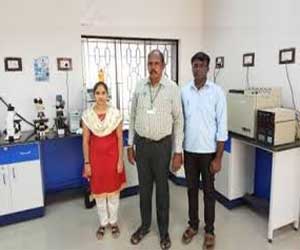- Home
- Editorial
- News
- Practice Guidelines
- Anesthesiology Guidelines
- Cancer Guidelines
- Cardiac Sciences Guidelines
- Critical Care Guidelines
- Dentistry Guidelines
- Dermatology Guidelines
- Diabetes and Endo Guidelines
- Diagnostics Guidelines
- ENT Guidelines
- Featured Practice Guidelines
- Gastroenterology Guidelines
- Geriatrics Guidelines
- Medicine Guidelines
- Nephrology Guidelines
- Neurosciences Guidelines
- Obs and Gynae Guidelines
- Ophthalmology Guidelines
- Orthopaedics Guidelines
- Paediatrics Guidelines
- Psychiatry Guidelines
- Pulmonology Guidelines
- Radiology Guidelines
- Surgery Guidelines
- Urology Guidelines
Selenium nanoparticles may act like antibacterial agents

Scientists have found that nanoparticles of selenium, an essential micronutrient, can be used as an antibacterial agent.
Selenium is found naturally in wheat, eggs, cheese, nuts, and seafood. It is an antioxidant and immunity booster. Scientists found that selenium nanoparticles, owing to their unique structure and properties, may be more effective than antibiotics as they have a larger surface area and therefore can be more in contact with the external environment.
The antibacterial effect may be due to the fact that at a particular concentration nano-selenium interacts with the bacterial cell surface and penetrates into the cell, thus causing damage. Selenium in excess is toxic. Though silver nanoparticles are also being used for similar purposes, researchers chose selenium due to their stable nature.
Selenium nanoparticles were made by combining sodium selenite with vitamin C. As the most easily observed property of nanoparticles is their colour change at different sizes, researchers allowed the process to continue till a colour change was seen. Thereafter, a high-speed centrifuge was used to separate selenium nanoparticles in the form of pellets from the solution.
To confirm whether the newly-produced selenium was actually selenium, the sample was matched in structure, function, and properties associated with selenium, using various methods. These artificially-made particles are spherical in shape with an average diameter range between 15 and 18 nanometers. The vitamin C used during the process helps in maintaining better uniformity of the particles
“Nano-selenium can be an alternative to antibiotics like ampicillin to prevent and treat a number of bacterial diseases or infections in humans,” claimed Muthuswami Ruby Rajan, who led the research team at the Gandhigram Rural Institute, while speaking to India Science Wire.
The study has also indicated that nano-selenium is 60 times more effective in fighting infections caused by S. aureus, E.coli and P. aeruginosa than conventional treatments. However, more research needs to be carried out to deduce the antimicrobial response of the disease-causing microorganisms.
The research team included Angamuthu Ananth, Venkidusamy Keerthika and Muthuswami Ruby Rajan. The study results have been published in the journal Current Science.
The article By Monika Kundu first appeared in India Science Wire

Disclaimer: This site is primarily intended for healthcare professionals. Any content/information on this website does not replace the advice of medical and/or health professionals and should not be construed as medical/diagnostic advice/endorsement or prescription. Use of this site is subject to our terms of use, privacy policy, advertisement policy. © 2020 Minerva Medical Treatment Pvt Ltd